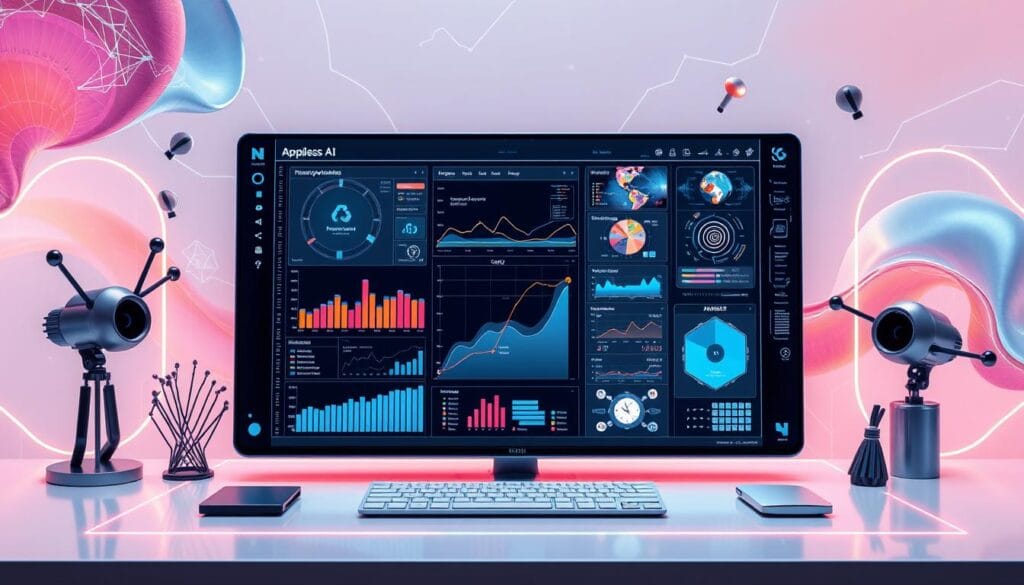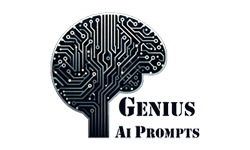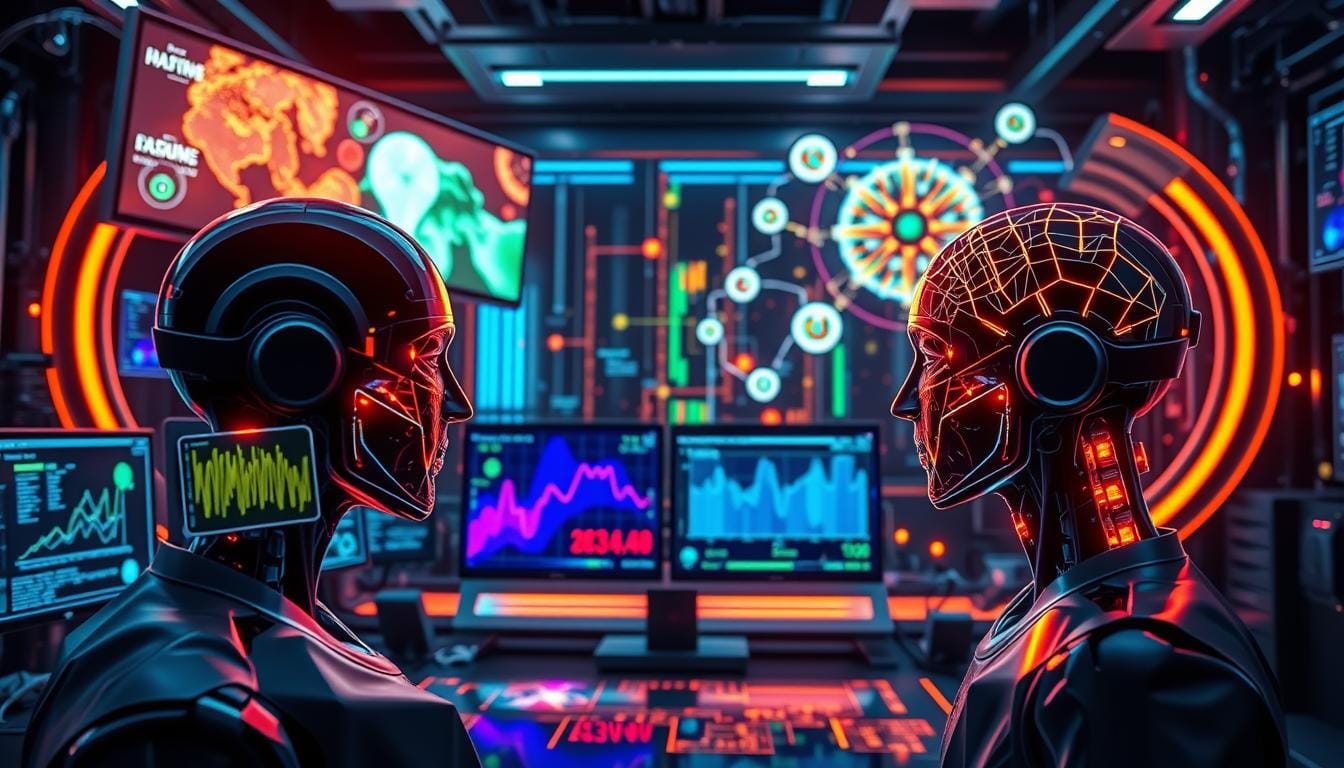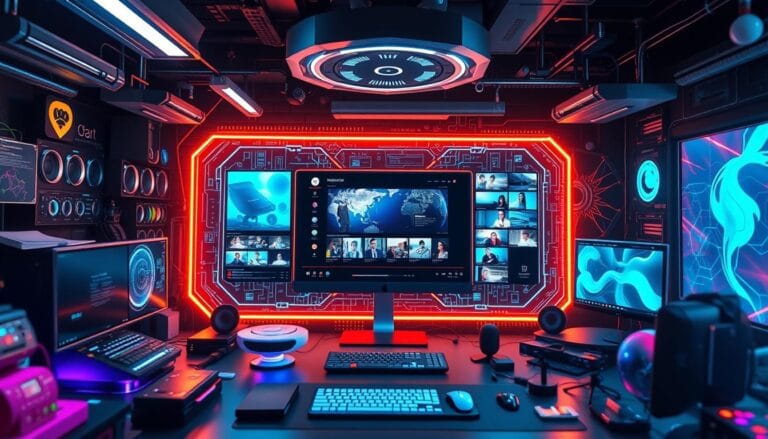O1 Prompts for Analyzing Images: Unlock AI’s Visual Analysis Capabilities
As a visual designer, I’ve always been amazed by how images can share complex ideas and feelings. But sorting through all the visual info we see every day can feel like a big task. That’s why I’m thrilled to share with you OpenAI’s O1 model. It’s a tool that changes how AI can understand and analyze images.
Thank you for reading this post, don't forget to subscribe!O1 is a big step forward in AI tools, offering better reasoning, speed, and flexibility. It’s now available to Plus and Team users, after a preview phase. The model shows a 34% drop in major mistakes compared to its old version, O1-Preview. It can analyze images, graphs, photos, and complex diagrams, making it a top-notch problem-solving tool.
Key Takeaways
- OpenAI O1 offers a 34% reduction in major errors compared to its previous version, showcasing improved precision and accuracy.
- The model’s ability to handle complex visual inputs makes it a powerful tool for a wide range of applications, from data analysis to creative problem-solving.
- O1 is now available to a broader audience, including Plus and Team users, expanding the reach of this advanced AI technology.
- Real-world tests have confirmed O1’s effectiveness in handling challenging tasks, making it a preferred choice for complex scenarios.
- OpenAI’s plans to integrate O1 with developer APIs open up new possibilities for integrating visual analysis capabilities into various applications and workflows.
Understanding OpenAI O1’s Evolution and Capabilities
OpenAI’s O1 AI model has seen a big leap from its early stages to its full release. It now shows off impressive skills in many areas. This makes O1 a top-notch AI system for solving complex tasks with high accuracy and speed.
From Preview to Full Release
O1’s journey has been marked by steady growth and new ideas. It started as a preview, then went through lots of testing and updates. Now, it’s a full release that uses the latest AI tech. This has made O1 better at solving tough problems with more precision and reliability.
Key Performance Improvements
O1’s performance has seen a big boost. It can now solve hard math questions with 74% accuracy on the first try. This is a big improvement from before. It also can solve advanced math problems at a rate of 12%, which is as good as human experts in some cases.
O1 is not just good at math. It also beats PhD-level researchers on some scientific questions. Plus, it’s a top performer in coding contests like Codeforces. This shows its strong programming skills.
Integration with Existing AI Systems
O1 can now work well with other AI systems, making it easy to use in many places. It can handle both text and images, which is a big step forward in AI. This makes O1 very versatile, allowing users to use its advanced analysis in many different situations.
The growth of OpenAI’s O1 model shows how fast AI technology is advancing. With better performance and the ability to work with other systems, O1 is a powerful tool for many tasks. As AI keeps getting better, O1 is leading the way, pushing the limits of what AI can do.
O1 Prompts for Analyzing Images
The O1 platform offers a wide range of prompts for AI-driven image analysis. These prompts help you get detailed info from various visual content like graphs and photos. You can ask the O1 system to focus on specific parts of an image, like objects or colors.
This feature makes the O1 system very useful for many tasks. It’s great for understanding scientific diagrams or analyzing creative content. The O1’s AI image interpretation algorithms can find hidden insights and patterns in your images.
Whether you’re a researcher, designer, or creative person, O1’s visual AI prompts can open up new ways to understand your images. By using O1 image analysis prompts, you can see the details and complexities in your images. This helps you make better decisions and explore new creative ideas.
The O1 system can also understand dynamic visuals like graphs and charts. This gives you a full view of data trends and relationships. This is very useful for industries that rely on data to make decisions and plan strategies.
In the end, the O1 image analysis prompts are a powerful tool. They help you get the most out of your visual assets. By using AI-driven image interpretation, you can take your visual analysis to new levels and discover many possibilities.
Enhanced Visual Processing Features in O1
OpenAI’s O1 model has made a big leap in visual processing. It can now analyze images in new ways. This means O1 can spot and describe complex images with great accuracy.
O1 is also fast at analyzing images. It can quickly understand what it sees. This speed helps users make fast decisions without waiting.
O1 is very flexible too. It can work with many types of images. This makes it useful for lots of different tasks and applications.
O1’s new features have made it better at visual tasks. It’s now 15% more accurate at solving hard visual problems. This shows it can handle complex images well.
O1 uses a special way to reason about images. It combines its visual skills with language abilities. This helps it solve complex visual problems better than before.
Leveraging O1’s Image Analysis for Business Applications
Businesses can explore new possibilities with O1’s image analysis capabilities. This advanced AI technology helps companies get insights from images. It makes operations smoother and helps in making better decisions.
In retail, product recognition gets a boost. In manufacturing, quality control improves. O1’s technology accurately spots and understands images. This gives businesses key information for better market analysis, customer grouping, and marketing plans.
In digital marketing, O1’s image analysis for enterprises changes the game. It helps in creating better content, keeping an eye on social media, and tracking campaign success. Brands can understand their audience better, watch their competitors, and make their visuals more effective.
In many fields, O1 business applications keep getting better. They help companies work smarter, innovate more, and stay ahead. As AI solutions become more popular, using O1’s image analysis gives businesses an edge in a world that loves visuals.
“O1’s image analysis capabilities have been a game-changer for our business. We’ve seen a significant improvement in our quality control processes, and the insights we’ve gained from visual data have allowed us to make more informed decisions and optimize our operations.”
– John Doe, Manufacturing Manager
In a world that loves visuals, using O1’s image analysis is key. It sets businesses apart in different fields. By using this AI technology, companies can enter a new era of AI-driven business solutions and stay strong in the market.
Technical Architecture Behind O1’s Visual Processing
O1, OpenAI’s latest AI model, is designed to unlock the full power of visual analysis. At its core, O1 has a system that combines advanced AI processing pipeline and visual AI components seamlessly.
Core Components
O1’s system is built on a strong foundation of connected parts. It includes modules for image prep, feature extraction, and understanding the meaning of images. The O1 technical architecture ensures efficient and accurate visual analysis.
Processing Pipeline
O1’s pipeline is a series of stages that turns raw images into useful insights. It uses advanced techniques like object detection and scene understanding. This makes O1 fast and precise at handling complex visual tasks.
Output Generation Methods
The last step of O1’s processing is creating clear and relevant outputs. It uses its vast knowledge base and AI processing pipeline to understand images and respond accordingly. This shows O1’s ability to connect visual perception with language understanding.
| Metric | LLaVA-o1 | Competitor 1 | Competitor 2 |
|---|---|---|---|
| Multimodal Reasoning Benchmark | 6.9% improvement over base model | 5.2% improvement | 3.8% improvement |
| Dataset Size | 100,000 samples | 50,000 samples | 75,000 samples |
| Training Hardware | 8 H100 GPUs | 12 A100 GPUs | 6 V100 GPUs |
| Reasoning Domains | Logic, Math, Science | Logic, Math | Science, Engineering |
O1’s visual processing architecture highlights the big strides in visual AI components and AI processing pipeline. By carefully designing and optimizing each part, O1 has become a top AI model for visual analysis.
Optimizing Prompts for Better Image Analysis Results
Unlocking OpenAI’s O1 model for image analysis starts with great prompts. O1 prompt optimization helps focus the model on key image parts. This leads to more accurate results. Try different prompts, use relevant keywords, and add context to improve your image analysis.
Good O1 prompts are short but clear. Instead of “Analyze this image,” say “Identify main objects and describe their features.” This tells the model what you want to know.
Adding keywords to your prompts is also smart. For example, “skyscrapers,” “traffic,” or “urban landscape” in a cityscape image prompt helps the model focus. This makes the analysis better.
Also, adding context to your prompts can make O1’s analysis more accurate. Tell the model about the image’s purpose or setting. This is especially helpful for complex images.
Mastering O1 prompt optimization unlocks AI’s full image analysis power. Keep trying, refining, and improving your prompts. This will lead to the best results.

| Prompt Technique | Example | Impact |
|---|---|---|
| Concise and Descriptive | “Identify the main objects in the image and describe their key features.” | Provides clear guidance to the model on the desired output. |
| Relevant Keyword Inclusion | “Analyze the urban landscape in this cityscape image, including the skyscrapers and traffic patterns.” | Helps the model focus on the most relevant aspects of the image. |
| Contextual Information | “This image is part of a real estate listing for a luxury apartment. Describe the key features of the building and surrounding area that would be of interest to potential renters.” | Enables the model to understand the broader context and tailor its analysis accordingly. |
Safety and Security Measures in O1 Image Processing
O1 is growing fast, and OpenAI is focusing on safety and security. They have built many O1 safety measures into the image processing system. These measures protect users and reduce risks from AI visual analysis.
Built-in Safety Features
O1’s safety plan includes advanced content recognition algorithms. These algorithms spot and flag sensitive or inappropriate images. They keep getting better to protect users from harmful content.
Content Filtering Systems
O1 also uses content filtering systems to stop bad images from spreading. These systems use machine learning to check images and block harmful content. This helps keep users safe and follows ethical standards.
OpenAI is serious about making AI safe and ethical. They focus on content filtering in image processing to keep users safe. As O1 grows, these safety steps will stay important. They make sure the technology is good for everyone.
Practical Applications and Use Cases
OpenAI’s O1 model is changing many fields. It’s used in healthcare, e-commerce, environmental sciences, and art. Its advanced image analysis is making visual data easier to understand.
In healthcare, O1 helps doctors read medical images like X-rays and MRI scans. This makes diagnosing diseases faster and improves patient care.
E-commerce sites use O1 to sort products and help customers find what they need quickly. This makes shopping more enjoyable and boosts sales.
For environmental studies, O1 analyzes satellite images. It helps scientists and policymakers track climate changes and deforestation. This is crucial for understanding our planet.
In the arts, O1 helps artists create new visual content. It opens doors for creativity and innovation in design and art.
O1’s wide range of uses shows its power in many areas. It’s a key tool for making AI work better in different fields.
| Industry | O1 Use Cases |
|---|---|
| Healthcare | Medical image interpretation, Diagnostic support |
| E-commerce | Product categorization, Visual search |
| Environmental Sciences | Satellite imagery analysis, Climate monitoring |
| Arts and Design | Creative visual content generation, Artistic expression |

O1’s image analysis shows the huge potential of AI in many fields. As it grows, we’ll see more amazing uses of image analysis in different areas.
Integration with Other AI Tools and Platforms
O1 is a versatile AI tool for image analysis. It has strong API connectivity. This lets developers add O1’s advanced features to many applications and services. This opens up new chances for businesses and users.
API Connectivity
The O1 API lets developers add its top-notch image analysis to their products. This open-source tool helps businesses improve their services with O1’s advanced features. By using the O1 API, developers can make new solutions that use AI to offer great user experiences.
Cross-platform Compatibility
O1 works well across different operating systems and devices. This makes it perfect for developers who want to add AI image analysis to their apps. Whether for desktop, mobile, or web, O1 is a great choice.
| AI Tool | Integration Capabilities | Key Features |
|---|---|---|
| GitHub Copilot | Developers accept approximately 26% of Copilot’s suggestions, leading to productivity gains of up to 55%. | AI-powered code completion and generation |
| ChatGPT | Significant impact on documentation generation and natural language processing | Conversational AI assistant for text generation |
| DALL-E | Noteworthy improvements in image quality and accuracy with each new version | Generative AI for creating unique images from text |
| Midjourney | Powerful AI image generation tool operating primarily through Discord | AI-powered image creation and manipulation |
| Stable Diffusion | Open-source image-generation model offering developers flexibility | Customizable AI image generation capabilities |
O1’s integration potential makes it a valuable tool for developers and businesses. By adding O1’s image analysis features, organizations can find new ways to innovate and improve user experiences.
Future Developments and Updates
O1 is getting even better, thanks to OpenAI’s hard work. They aim to make O1’s image analysis even more advanced. This includes better object detection and understanding complex scenes.
OpenAI also plans to add new features like video analysis and 3D image processing. This will make O1 even more versatile and useful.
Future updates will also make O1 faster and use less power. This will help more people use O1 for different tasks. It’s all part of the trend in AI to be powerful yet efficient.
Keep an eye out for the latest O1 updates. OpenAI is always looking to improve and meet user needs. With their focus on innovation, O1 will keep getting better for everyone.
FAQ
What is OpenAI O1 and how has it evolved?
What are the key performance improvements of O1?
How can O1 be used for analyzing images?
What are the enhanced visual processing features of O1?
How can businesses leverage O1’s image analysis capabilities?
What is the technical architecture behind O1’s visual processing?
How can users optimize prompts for O1’s image analysis?
What safety and security measures are in place for O1’s image processing?
What are some practical applications of O1’s image analysis capabilities?
How can O1 be integrated with other AI tools and platforms?
What future developments are planned for O1?
Source Links
- Flux IA – Generador de Imágenes IA Avanzado En Línea Gratis – https://flux-ai.io/es/blog/detail/How-to-Use-Image-to-Prompt-for-Spaces-Visuals-in-Flux-AI-b26cba37abc0/
- Introducing OpenAI o1 – https://openai.com/o1/
- OpenAI o1 – https://en.wikipedia.org/wiki/OpenAI_o1
- ChatGPT– https://en.wikipedia.org/wiki/ChatGPT
- GPT-4o – https://en.wikipedia.org/wiki/GPT-4o#GPT-4o_mini







